I should have re-arranged the salad (aka bread) so you could see the lovely mound of heirloom tomatoes in the bottom of the bowl. You can see the bread (toasted croutons, actually), the basil, red onions, corn and fresh mozzarella cheese. Oh, and the little tiny drizzle of extra-good EVOO.
This recipe came from a contributor (Georgia Pellegrini) on The Pioneer Woman’s website. It’s not on Ree’s own blog, but the recipe section of her website where people all over contribute their own recipes. There’s a huge treasure-trove of recipes there if you haven’t ever looked. Anyway, this has been in my to-try file for awhile. I adore panzanella salad (the Italian bread salad with tomatoes, garlic and basil) and with good tomatoes starting to be available, they’re so perfect for this kind of salad. And although this bears a great resemblance to a panzanella, this isn’t the same thing. I also took some liberties with the salad – I was serving it to 4 girlfriends for lunch – as an entrée – and I wanted it to have a bit more substance, so I added in the fresh corn and fresh mozzie.
What makes this salad different is the making of “tomato water.” I know, sounds weird. Into a blender you put 3-4 tomatoes (heirlooms or extra ripe and tasty red ones, juicy ones), a bunch of basil, a bunch of cilantro, half of a red onion, sliced thin, garlic and some white wine vinegar. This gets blended up 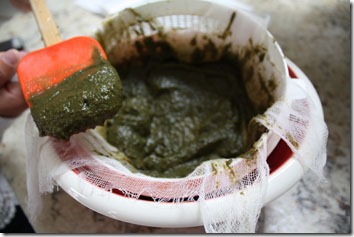 into a sludge. It seems like a waste – I know, I know – but trust me on this. The end result is worth it. It may seem like you’re throwing away a good bunch of tomatoes. The picture at left is what the sludge looks like. It’s draining in a strainer lined with cheesecloth. In the photo it looks just awful, I know, but I used some green zebra tomatoes and yellow ones, and only one red tomato, so of course it’s going to look green and muddy. If you want it to be clear and bright, maybe with a slight pink tinge, use all red tomatoes. I saved the sludge – don’t know for what yet – maybe soup? Gazpacho?
into a sludge. It seems like a waste – I know, I know – but trust me on this. The end result is worth it. It may seem like you’re throwing away a good bunch of tomatoes. The picture at left is what the sludge looks like. It’s draining in a strainer lined with cheesecloth. In the photo it looks just awful, I know, but I used some green zebra tomatoes and yellow ones, and only one red tomato, so of course it’s going to look green and muddy. If you want it to be clear and bright, maybe with a slight pink tinge, use all red tomatoes. I saved the sludge – don’t know for what yet – maybe soup? Gazpacho?
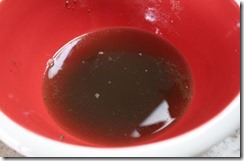 Now, after half an hour of draining, you end up with about a cup of tomato water. Here’s a photo of what that looked like. Not very pretty either.
Now, after half an hour of draining, you end up with about a cup of tomato water. Here’s a photo of what that looked like. Not very pretty either.
BUT, it’s really tasty stuff. Trust me on this one. I took a tiny teaspoon of it – so I’d know what it tasted like – and was very pleasantly surprised at how flavorful it was. It’s not like tomato juice at all. Each person got about 1/4 cup in the bowl. Then you start adding all the other ingredients, with the croutons added last, along with a few pretty basil leaves. I think I probably used too many croutons, so you can vary how many based on your family’s likes/dislikes.
When you bake the bread croutons – do try to leave them so they’re slightly soft in the center – I followed the recipe and the croutons were rock hard, so each of us had to mush the bread around into the tomato water at the bottom of the bowl to soften it some. But then, that’s the whole idea anyway. I could have tossed it all together, but it wouldn’t have looked quite so pretty.
What’s GOOD: well, I love panzanella, so I knew it was a sure-fire thing I’d like this. My friend Joan said she liked the freshness of it and that it was extra healthy. The tiny drizzle of EVOO on top was the only fat – although you do use some to brush on the croutons too. Still not much. I think my recipe program says there are 9 grams of fat in the salad. I think the extra work of making the tomato water was well worth it.
What’s NOT: maybe just the time spent making the tomato water. A bit of a nuisance, but it adds a lot on the flavor scale. Otherwise, it’s something you could make any evening for a quick meal. I had my granddaughter and her cousin work on pushing the sludge through the cheesecloth – it takes awhile to drain otherwise.
Files: MasterCook 5+ and MasterCook 14 (click on link to open recipe in MC)
* Exported from MasterCook *
Tomato Bread Salad with Corn and Mozzarella
Recipe By: Adapted from a recipe at The Pioneer Woman blog, from a reader, Georgia Pellegrini
Serving Size: 4
2 large tomatoes
1/2 whole red onion
2 cloves garlic
1 cup basil — picked
1/2 cup cilantro
1/2 cup parsley
2 tablespoons white wine vinegar
1/2 teaspoon sea salt
1 medium baguette
2 tablespoons olive oil — for brushing on the bread
2 cloves garlic
1/2 teaspoon sea salt
1/2 teaspoon freshly ground black pepper
3 whole heirloom tomatoes — (the more colorful the better!)
1 cup cherry tomatoes — heirloom type if available, multi-color
1 cup arugula
1/2 cup basil leaves — small size, for topping
8 ounces fresh mozzarella cheese — sliced in bite-sized pieces
2 ears fresh corn — cut off the cob
1 tablespoon extra virgin olive oil — to drizzle on top as it’s served
Notes: If you want the tomato water to be mostly clear or slightly pink, use red tomatoes. Using green ripe tomatoes will make the water a darker, muddy color.
1. TOMATO WATER: Cut the large tomatoes into quarters and add to a blender. Slice the red onion thinly and set half of the slices aside and add the other half to the blender. Add the 1 cup basil, cilantro, and parsley to the blender along with the vinegar and ½ teaspoon of salt and puree the mixture for several minutes until it’s a smooth sludge.
2. Place a piece of cheesecloth over a fine mesh strainer and set it over a bowl. Pour the mixture into a mesh strainer and press it through until all of the liquid is extracted. Set the bowl of tomato water aside (or refrigerate for a few hours).
3. CROUTONS: Preheat the oven to 325°F. Cut the baguette lengthwise and drizzle or brush all sides with olive oil. Then rub the baguette on all sides with garlic (or sprinkle garlic salt on the bread if you want to save some time). Cut the baguette into cubes and place them into a baking dish. Add salt (unless you used garlic salt earlier) and pepper and toss. Bake for 15 minutes then remove from the oven to let cool. Ideally the cubes will still have some softness to them – you don’t want them to be rock-hard.
4. SALAD: Slice the heirloom and cherry tomatoes into bite sized pieces. Pour ½ cup of tomato water in the bottom of each wide-style bowl. Add the tomatoes, arugula and some of the basil leaves. Sprinkle on the corn and place the sliced mozzarella decoratively around the edges. Drizzle with olive oil and add a bunch of croutons just before serving. Sprinkle with good sea or fancy salt and garnish with a few small basil leaves on top. The croutons are dry and crunchy, but they should be pushed around, down into the tomato water – where the flavor is. Serve them on top, then encourage your guests to stir it up a bit.
Per Serving (this assumes you eat all the pulp/flesh of the blended tomatoes, which you don’t do): 553 Calories; 15g Fat (24.0% calories from fat); 17g Protein; 93g Carbohydrate; 15g Dietary Fiber; trace Cholesterol; 1213mg Sodium (sodium seems very high).





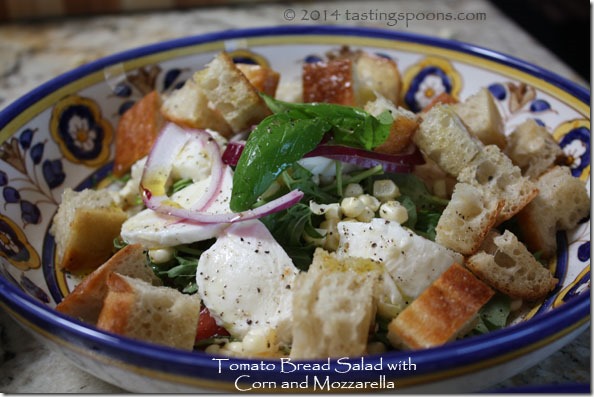

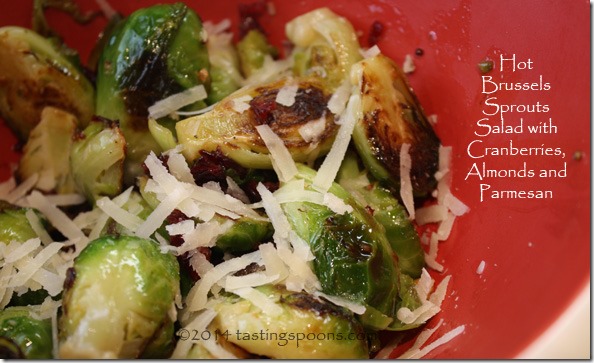
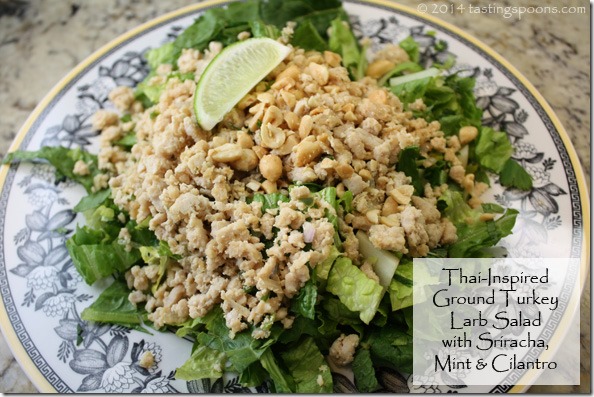
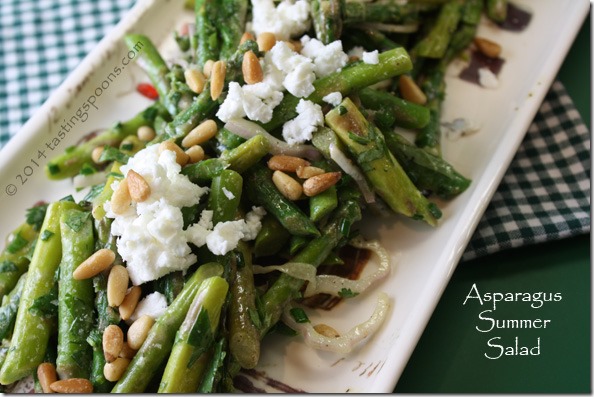
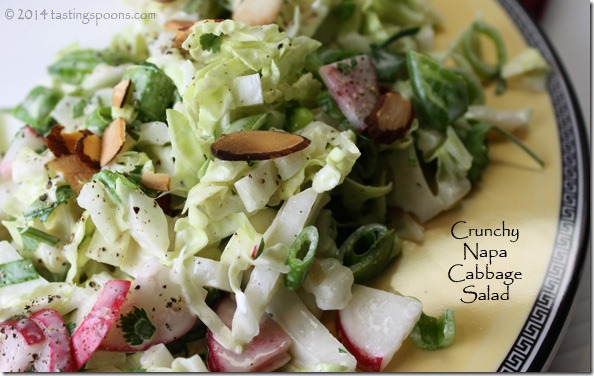
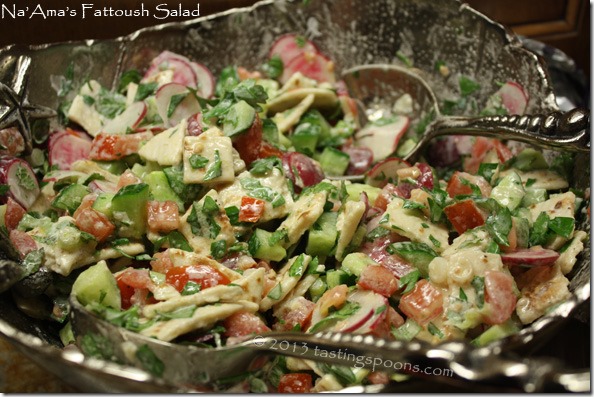
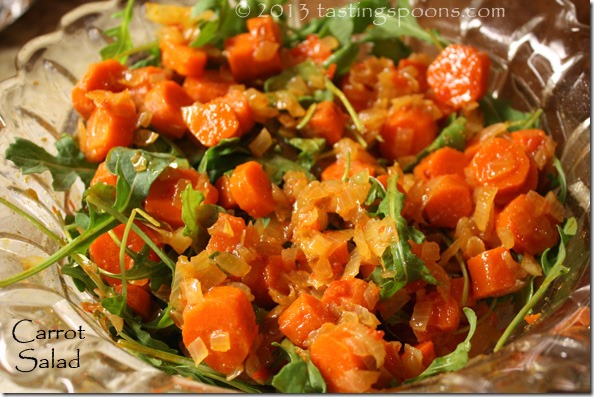
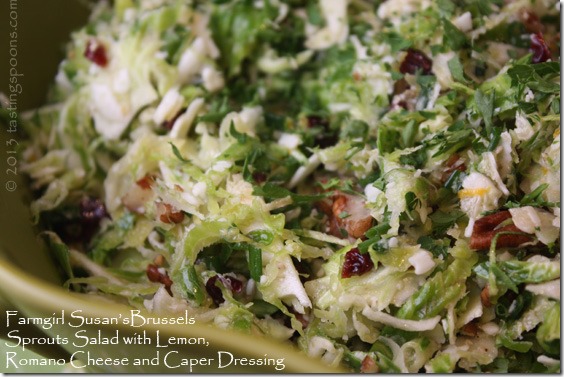
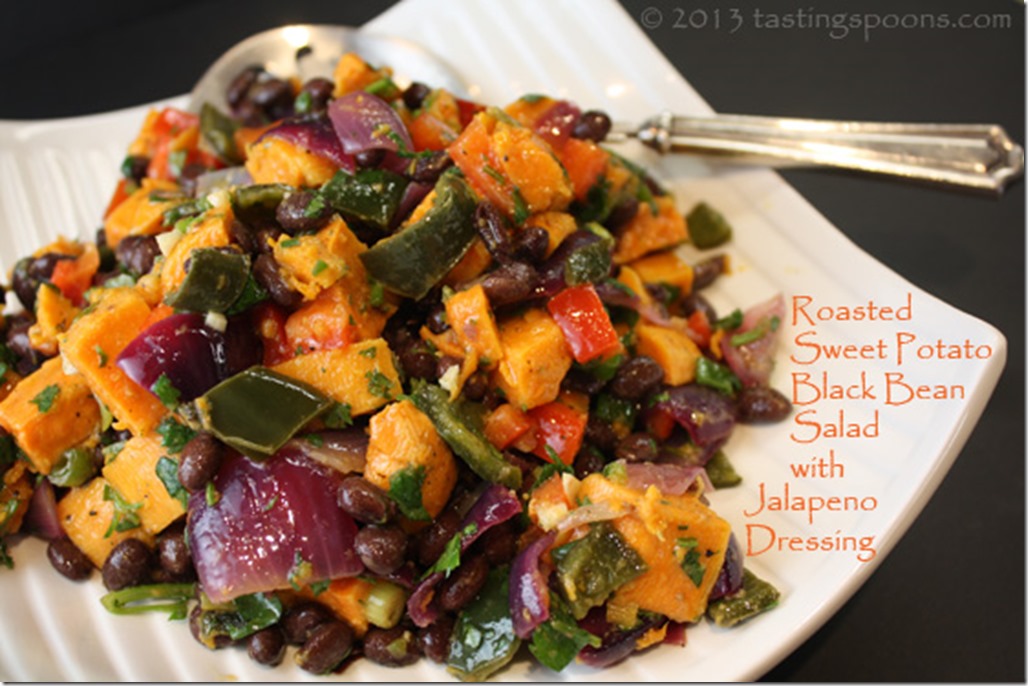
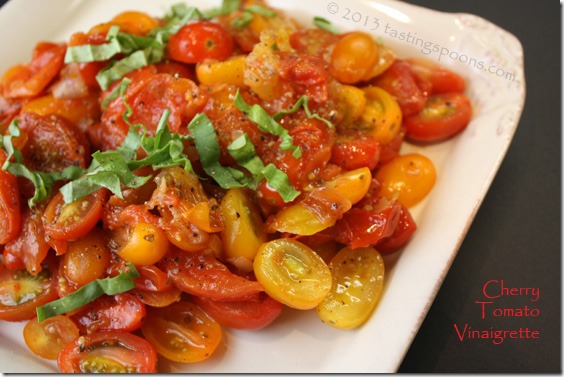
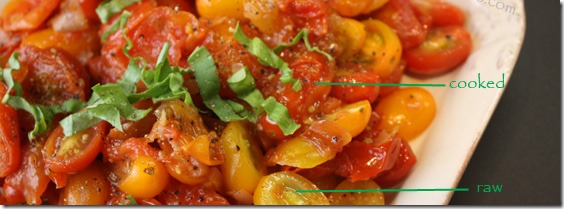
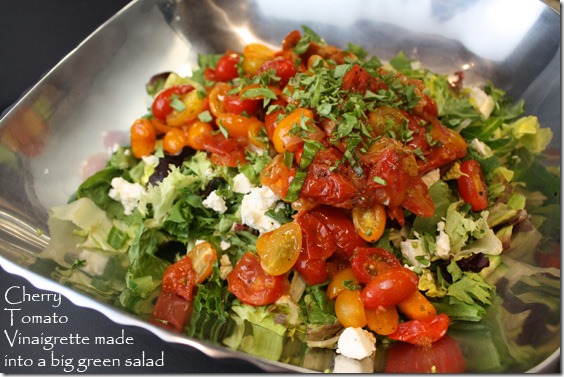
Leave a Comment!